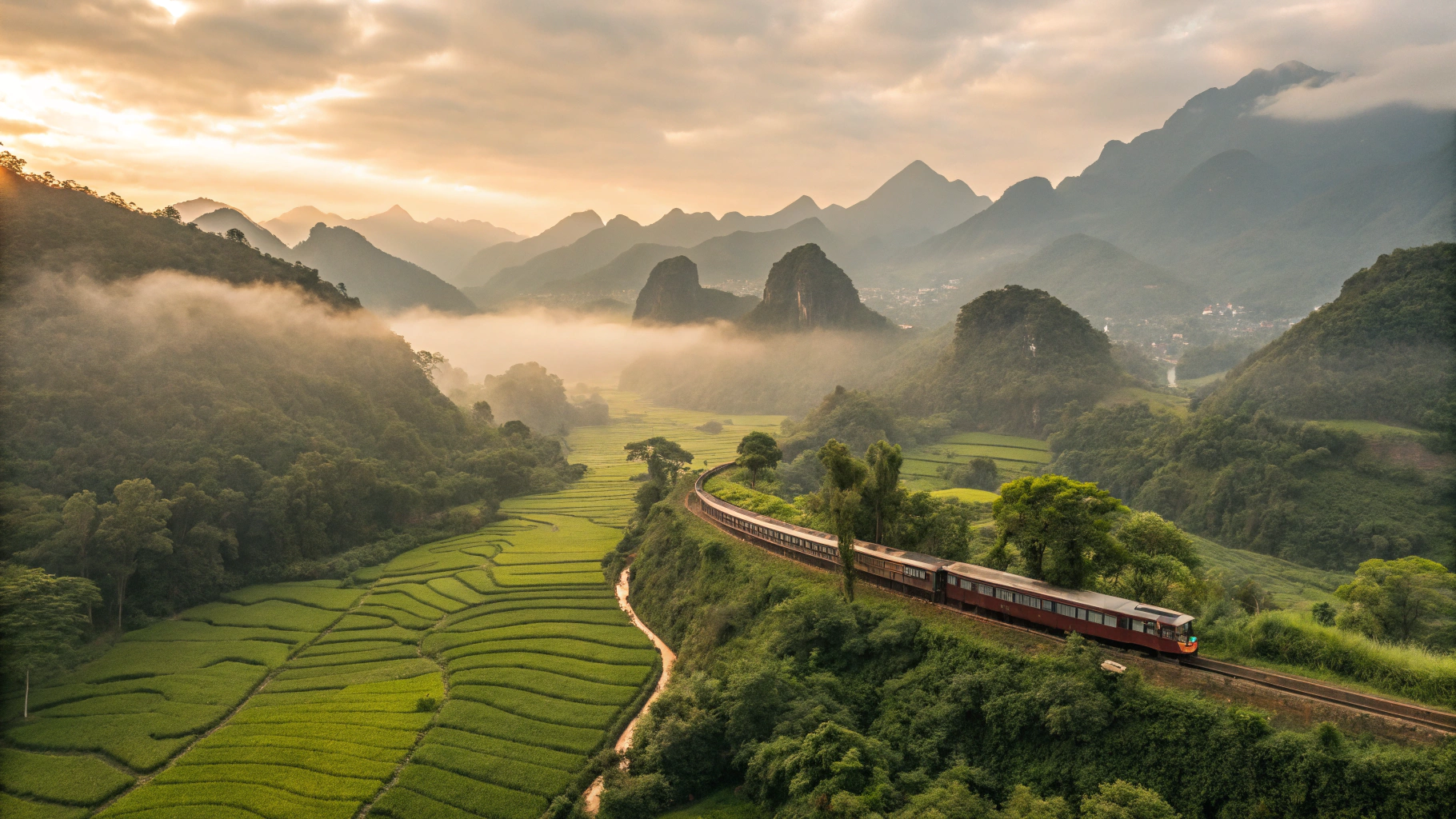The gentle rocking of the carriage, the whistle piercing the morning mist, and landscapes that transform before your eyes—there’s something inherently magical about train journeys in Asia.
I still remember my first overnight trip on the rails in Vietnam, awakening to the sight of emerald rice paddies stretching to the horizon, as farmers in conical nón lá hats worked the fields just as the sun began to paint the sky in shades of orange and pink.
Asia’s train journeys offer more than just transportation; they’re immersive experiences that connect you to the heart of a region. From luxurious cabin cars cutting through mountain ranges to rustic trains navigating through dense jungles, these rail adventures provide a unique perspective that flying simply can’t match.
Whether you’re seeking adventure, cultural immersion, or simply spectacular scenery, these ten remarkable train journeys across Asia deliver unforgettable experiences for every type of traveler.
1. The Eastern & Oriental Express (Singapore to Bangkok)
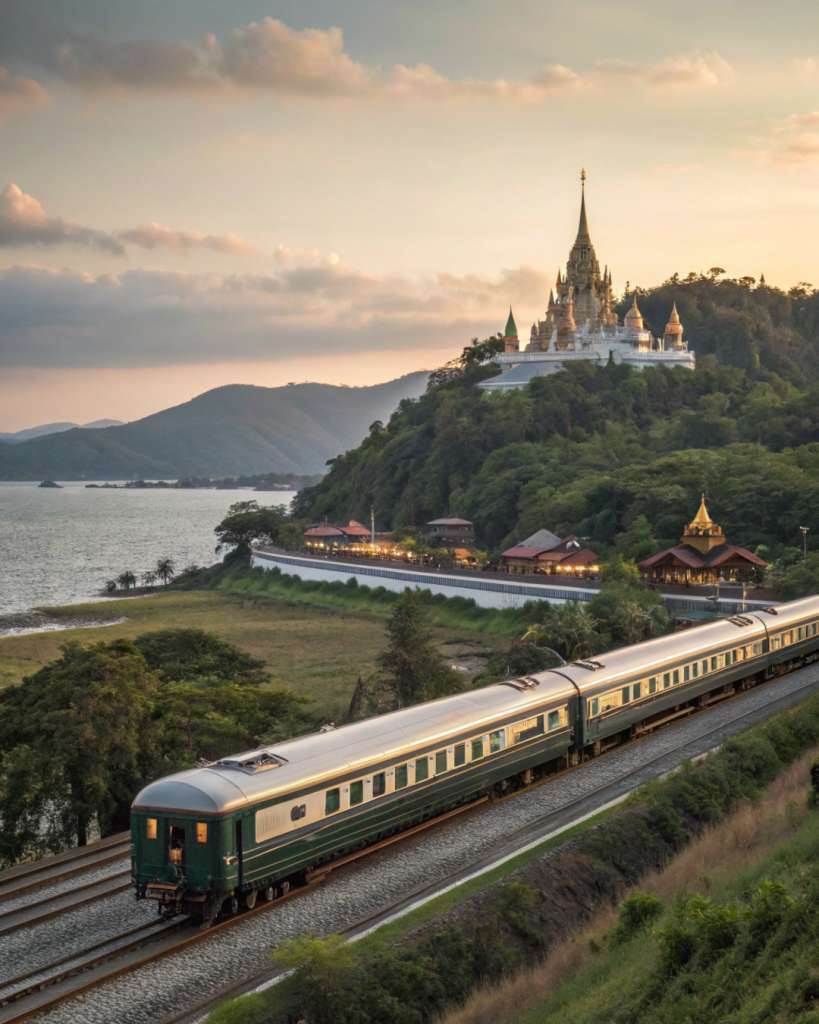
A Taste of Colonial Luxury
If Agatha Christie had set “Murder on the Orient Express” in Southeast Asia, the Eastern & Oriental Express would have been the perfect backdrop.
This luxurious train journey carries the romance of a bygone era, with its polished wood-paneled corridors, plush upholstery, and attentive white-gloved service.
The journey begins in the ultra-modern cityscape of Singapore before crossing into Malaysia and eventually reaching Thailand. Along the way, you’ll witness the transformation of landscapes from rubber plantations to limestone karsts, all while enjoying gourmet meals in the elegant dining car.
Essential Information:
- When to visit: November to February offers the most pleasant weather conditions with lower humidity.
- Duration: 3 days, 2 nights for the full journey
- Cost: Approximately $3,000-$7,000 per person, depending on cabin class
- Booking: Reservations should be made at least 6 months in advance through Belmond or luxury travel agencies
- Highlights: Crossing the famous River Kwai, stopping at Kuala Kangsar, panoramic views of rural Malaysia
In my experience, the Presidential Suite offers the most spectacular views, though the State Cabins provide excellent value with their private bathrooms and large windows. The observation car is where you’ll want to spend most of your time—I recommend arriving early to secure the coveted rear-facing seats for unobstructed views.
2. The Trans-Siberian Railway (China to Russia)
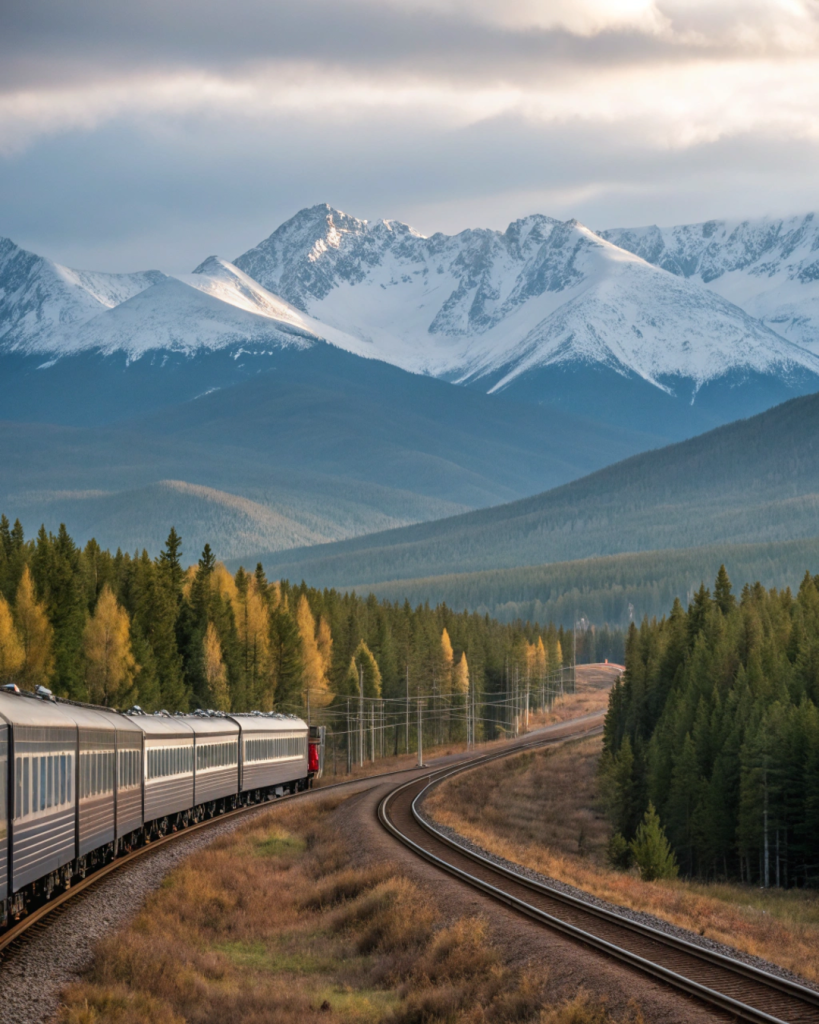
Where East Meets North
While technically a Russian route, the Trans-Manchurian and Trans-Mongolian branches of this legendary railway offer some of Asia’s most spectacular scenery. Starting in Beijing, these routes cut through the heart of Mongolia or China’s northeastern provinces before connecting to the main Trans-Siberian line in Russia.
The journey showcases the dramatic transition from China’s densely populated east to the vast emptiness of the Gobi Desert and the rolling steppes of Mongolia. As you cross the border into Russia, watch as the landscape transforms again into Siberian taiga forests.
Essential Information:
- When to visit: May to September for the most pleasant weather
- Duration: 6-7 days for the full journey
- Cost: $800-$1,500 for a second-class ticket (depending on season)
- Booking: Tickets can be purchased up to 90 days in advance through Russian Railways or specialized agencies
- Must-see stops: Ulaanbaatar (Mongolia), Lake Baikal, Irkutsk
The train’s restaurant car changes at each border crossing, offering a unique culinary journey. In China, try the jiaozi (dumplings); in Mongolia, don’t miss the hearty buuz (steamed meat dumplings); and once in Russia, warm up with borscht soup.
Pack plenty of snacks and instant noodles, as the train makes frequent stops where you can purchase hot water. I’ve found that a small electric kettle can be a lifesaver for making coffee and quick meals during the long journey.
3. The Toy Train to Darjeeling (India)
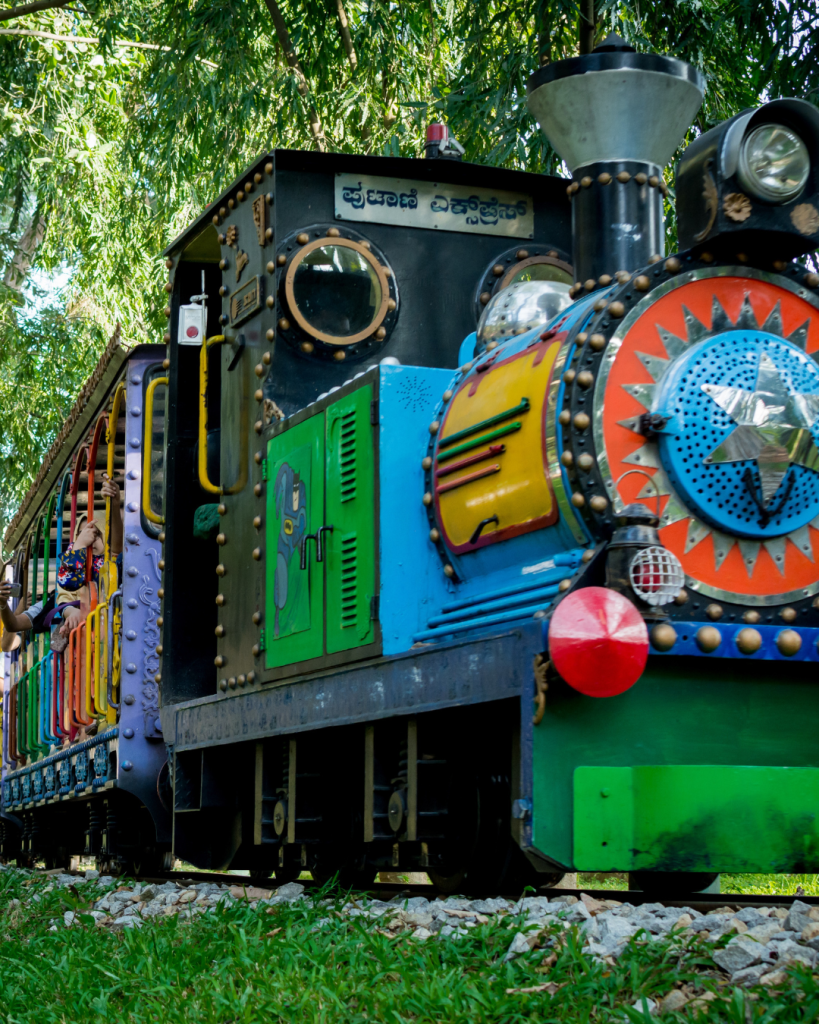
A Himalayan Adventure on Narrow Gauge
The Darjeeling Himalayan Railway, affectionately known as the “Toy Train,” is a UNESCO World Heritage site that has been chugging along narrow mountain tracks since 1881. This 78km journey from New Jalpaiguri to Darjeeling climbs from 100m to over 2,200m above sea level, offering breathtaking views of the Himalayas, including glimpses of Kanchenjunga, the world’s third-highest peak.
The blue diesel or occasional steam engine pulls vintage coaches at a leisurely pace, sometimes slow enough that local children run alongside selling snacks and chai. The train makes several loops and reverses to gain altitude, with the famous Batasia Loop offering a 360-degree panorama of the mountains.
Essential Information:
- When to visit: October to November or March to May for clear mountain views
- Duration: 7-8 hours (though delays are common)
- Cost: ₹1,500 ($18) for first class, ₹75 ($1) for second class
- Booking: Available on the Indian Railways website up to 120 days in advance
- Where to stay: The Windamere Hotel or Mayfair Darjeeling for colonial charm
- Must-see places: Ghum Monastery, Batasia Loop, Darjeeling Himalayan Zoological Park
The train is notoriously unreliable, so I recommend planning extra time in your itinerary. Bring layers as the temperature drops significantly as you ascend. First class offers more comfortable seating, but second class puts you in closer contact with locals and their fascinating stories.
Don’t miss trying Darjeeling’s famous tea at source—visit Happy Valley Tea Estate for a tour and tasting session. For a memorable meal, head to Glenary’s for their English breakfast and incredible views of the Himalayas.
4. The Jiji Line (Taiwan)
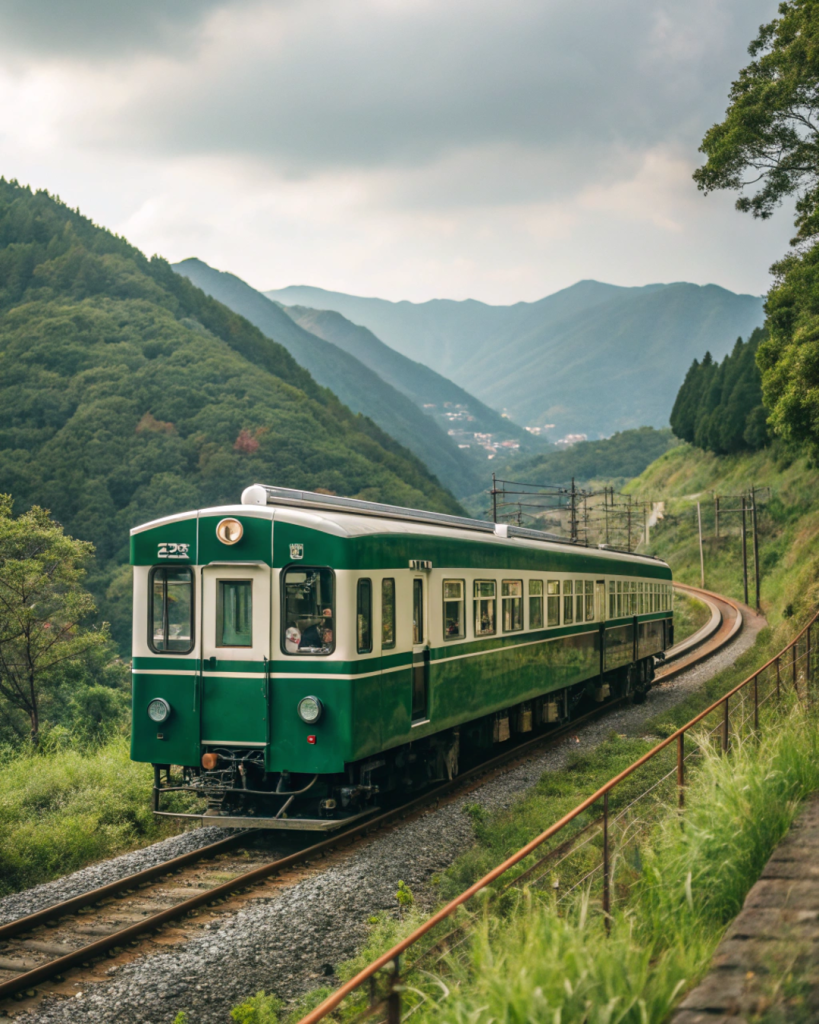
Taiwan’s Mountain Railway Gem
Often overlooked by international tourists, Taiwan’s Jiji Line is a scenic railway that cuts through the island’s central mountain range. This 29km branch line connects Changhua and Checheng, passing through tunnels, over bridges, and alongside dramatic river gorges.
Originally built during Japanese colonial rule for logging, the line was nearly abandoned in the 1990s but was saved by local activists. The devastating 1999 earthquake damaged much of the route, but its restoration has made it more popular than ever with domestic tourists.
Essential Information:
- When to visit: October to April for comfortable temperatures and less rain
- Duration: 90 minutes one-way
- Cost: NT$86 ($3) one-way
- Booking: Purchase tickets at the station same-day
- Where to stay: Fenchihu Hotel for a classic mountain experience
- Must-see places: Jiji Station, Wuchang Temple, Checheng’s bamboo forests
The small town of Jiji is famous for its ban tiao (flat rice noodles) and mochi (rice cakes). Sample these local delicacies at the market near the station. For something more substantial, try the mountain vegetable stir-fries at any of the family restaurants along Zhongzheng Road.
I recommend taking the first morning train to avoid crowds and enjoy the magical mist that often shrouds the mountains. The light is particularly beautiful for photography during this time.
5. The Desert Express (Sri Lanka)
Coastal Cliffs and Colonial Heritage
Sri Lanka’s railway system is a living museum of British colonial infrastructure, and the coastal route from Colombo to Matara offers some of the island’s most spectacular scenery. The highlight is the stretch between Colombo and Galle, where the train hugs the coastline so closely that sea spray sometimes reaches the windows.
The journey passes through fishing villages, coconut plantations, and bustling towns, with the Indian Ocean always visible to the west. Keep your camera ready for the iconic sight of stilt fishermen perched on their poles in the shallow waters near Koggala.
Essential Information:
- When to visit: December to April for dry season
- Duration: 3-4 hours (Colombo to Galle)
- Cost: Rs. 500 ($1.50) for second class, Rs. 1,000 ($3) for first class
- Booking: First class can be booked online; second and third class at the station
- Where to stay: Fort Bazaar or Galle Fort Hotel in Galle’s historic fort
- Must-see places: Galle Fort, maritime museum, Unawatuna Beach
The train’s vendors sell delicious vadai (savory lentil donuts) and thambili (king coconut water)—both perfect refreshments for the journey. In Galle, don’t miss the fusion cuisine at Fortaleza or traditional Sri Lankan rice and curry at Elita Restaurant.
A local tip: sit on the right side of the train when heading south for the best ocean views. The doors between carriages are often left open, creating natural viewing platforms where you can safely stand and take photos.
6. The Reunification Express (Vietnam)
Vietnam’s Coastal Lifeline
Running the length of Vietnam from Hanoi to Ho Chi Minh City, the Reunification Express offers a comprehensive view of this diverse country. The name commemorates the linking of North and South Vietnam after the war, though the current trains are modern replacements of the original colonial-era carriages.
The most scenic section is between Hue and Da Nang, where the train winds along the coast, offering spectacular views of the South China Sea. The Hai Van Pass (Ocean Cloud Pass) is the highlight, with the train ascending nearly 500m above sea level and providing panoramic vistas of beaches, mountains, and lagoons.
Essential Information:
- When to visit: February to April for the central region’s best weather
- Duration: 36 hours for the full journey, 3 hours for the Hue-Da Nang section
- Cost: $40-$70 for a soft sleeper berth on the full route
- Booking: Available on Vietnam Railways website or through hotels/agencies
- Where to stay: Anantara Hoi An or Banyan Tree Lang Co for luxury near Da Nang
- Must-see places: Hai Van Pass, Lang Co Bay, Marble Mountains
The train’s dining car serves decent phở (noodle soup) and cơm rang (fried rice), but I recommend stocking up on bánh mì sandwiches and fresh fruit before boarding. At major stations, vendors sell local specialties through the windows—try the bánh bèo (steamed rice cakes) in Hue and mì quảng (turmeric noodles) in Da Nang.
For comfort, book a soft sleeper compartment in the newer SE-category trains. Bring earplugs, as the train horn sounds frequently, especially at night.
7. The Maglev (Shanghai, China)
The Future of Rail Travel
While most iconic train journeys celebrate traditional rail travel, Shanghai’s Maglev (magnetic levitation) train represents the cutting edge of transportation technology. Although the journey is brief—just 7 minutes to cover the 30km between Pudong International Airport and Longyang Road Station—it’s an exhilarating experience as the train reaches speeds of up to 430 km/h (267 mph).
The Maglev uses magnetic levitation to eliminate friction, allowing for incredible speed and a surprisingly smooth ride. Watch the speed indicator in the carriage climb as you zoom past the Shanghai suburbs faster than any other commercial train in the world.
Essential Information:
- When to visit: Year-round, though spring and autumn offer the most pleasant weather
- Duration: 7-8 minutes
- Cost: CNY 50 ($7) one-way, CNY 80 ($11) for a round trip
- Booking: Purchase tickets at the station
- Where to stay: Grand Hyatt Shanghai or Park Hyatt Shanghai for luxury
- Must-see places: The Maglev Museum at Longyang Road Station, Shanghai Tower
After experiencing the Maglev, visit the nearby Shanghai Science and Technology Museum or take the Metro Line 2 to explore the Bund and Pudong’s futuristic skyline.
I recommend taking the Maglev both ways to fully appreciate the experience. If possible, ride during off-peak hours when the train is more likely to reach its maximum speed.
8. The Kuranda Scenic Railway (Australia)
Rainforest Railways
While technically in Australia, the Kuranda Scenic Railway in Far North Queensland offers a distinctly tropical Asian feel as it winds through one of the world’s oldest rainforests. Starting in Cairns, this historic railway climbs into the Atherton Tablelands, passing spectacular waterfalls, deep ravines, and tunnels cut through ancient volcanic rock.
Built by hand between 1882 and 1891, the railway was an engineering marvel of its time. Today, it offers a comfortable journey through landscapes that feel more like Borneo or Papua New Guinea than typical Australian scenery.
Essential Information:
- When to visit: May to October for dry season
- Duration: 1 hour 45 minutes one-way
- Cost: AUD 80 ($55) for standard class, AUD 150 ($105) for Gold Class
- Booking: Available online up to 6 months in advance
- Where to stay: Silky Oaks Lodge or Thala Beach Nature Reserve
- Must-see places: Barron Falls, Rainforestation Nature Park, Kuranda Markets
The Gold Class experience includes sparkling wine, appetizers, and dedicated service—well worth the upgrade for a special occasion. The train makes a photo stop at Barron Falls, where a viewing platform offers spectacular views of the waterfall and gorge.
In Kuranda, try the local tropical fruits at the markets or enjoy a bush tucker experience at Rainforestation. For a unique return journey, take the Skyrail Rainforest Cableway back to Cairns, gliding above the rainforest canopy.
9. The Sagano Scenic Railway (Japan)
Kyoto’s Romantic Train
Known locally as the “Romantic Train,” the Sagano Scenic Railway offers a picturesque 25-minute journey through the outskirts of Kyoto. The train runs along the Hozugawa River, with the scenery changing dramatically with the seasons—cherry blossoms in spring, lush greenery in summer, vibrant foliage in autumn, and occasional snow in winter.
The vintage-style trains feature open-air carriages in warm weather, allowing passengers to feel the breeze and take unobstructed photos of the dramatic river gorge and surrounding mountains.
Essential Information:
- When to visit: Late March for cherry blossoms or late November for autumn colors
- Duration: 25 minutes one-way
- Cost: ¥630 ($5.70) one-way
- Booking: Available online up to 1 month in advance (essential during peak seasons)
- Where to stay: Suiran Luxury Collection or Hoshinoya Kyoto for riverside luxury
- Must-see places: Arashiyama Bamboo Grove, Togetsukyo Bridge, Tenryu-ji Temple
After the train journey, explore Arashiyama’s other attractions, including the famous bamboo grove and monkey park. For lunch, try yudofu (boiled tofu) at one of the riverside restaurants—this local specialty is particularly delicious at Yudofu Sagano.
I recommend taking the first morning train to avoid crowds, especially during cherry blossom season. After the train ride, consider a traditional river boat cruise down the Hozugawa River for a different perspective of the same scenery.
10. The Death Railway (Thailand/Burma)
A Journey Through History
The Thailand-Burma Railway, infamously known as the “Death Railway,” carries a somber history. Built by Allied prisoners of war and Asian laborers under Japanese occupation during World War II, it claimed the lives of over 100,000 workers. Today, the remaining section from Kanchanaburi to Nam Tok offers a moving journey through beautiful but poignant landscapes.
The most spectacular part of the journey is crossing the wooden viaduct at Tham Krasae, where the train hugs the cliff face above the Kwai Noi River. The wooden trestle bridge, rebuilt after the war, is an engineering marvel that offers spectacular views of the river below.
Essential Information:
Must-see places: Bridge over the River Kwai, Hellfire Pass Memorial Museum, Krasae Cave
When to visit: November to February for cooler, drier weather
Duration: 2-3 hours one-way
Cost: 100 THB ($3) for a third-class ticket
Booking: Purchase tickets at Kanchanaburi station on the day of travel
Where to stay: The FloatHouse River Kwai or River Kwai Jungle Rafts

